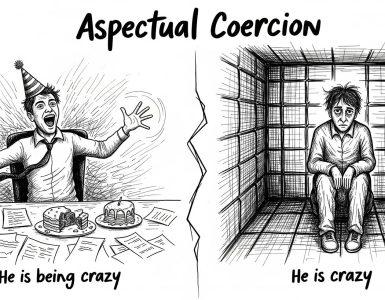In order to know how each word in a sentence is working the first step is to identify its part of speech in a sentence and although it may look easy at first ,it is trickier that what you may think. In this article I am going to talk about how to identify each part of speech based on easy and concrete rules. It is important to mention that this may apply to other languages but I write it only with English language in mind.
Important note!
In order to make everything easier we only talk about simple sentences and clauses. Although, every other type of sentence can be broken down to dependent or independent clauses as well.
The foundation
The most important parts of speech in a sentence are these two:
- Nouns and pronouns: can work as a subject or object in a sentence
- Verbs: does the action in a sentence or shows a state
almost everything else in a sentence gets its role in relation to one of these two so these two are the foundation of POS tagging.
Identifying a noun or pronoun
- Look up: Although hyponyms are very common in English but still many words only come with one part of speech. This includes proper nouns that are very easily recognizable. For words like pronouns this is even easier because there are only a handful in English and they can be easily identified in a sentence.
- Position: English is a SVO language. It means in indicative clauses (which include most cases), the first word or phrase of the sentence is always either a noun/noun phrase or pronoun. After that comes the the verb or verb phrase and then the direct or indirect object which are again noun/noun phrase or pronoun. This rule does not apply to interrogative or imperative sentences but recognizing those sentences would not be a challenge.
- Dependencies: As said before other parts of speech get their role in the sentence in relation to either nouns or verbs. in English determiners ,adjectives and prepositions only come before a noun so anything with a determiner ,a descriptive adjective or a preposition is a noun/noun phrase (and in some cases a pronoun).
Noun vs. Pronoun
Syntax-wise nouns and pronouns are identical. Pronouns just like nouns can play the role of the subject or object of a sentence but pronouns never get a determiner and rarely come with a descriptive adjective.
Recognizing a verb
- Look up: It can be more difficult for verbs as most verbs also can be used as a noun in English, but still there are verbs that are easily recognized.
- Position and use limit: Each clause or sentence in English can only come with one main verb. This verb can accompany auxiliary verbs or modal verbs but the number and position are very limited. Auxiliary and modal verbs in English always come before the main verb (in indicative sentences directly before the verbs or verb phrase)
- Dependencies: The only part of speech that can be described as a verb is an adverb. Adverbs do not directly describe a noun (but can be a part of a noun phrase) so anything with a descriptive adverb is not a noun.
- Inflections: There are inflections like -ing and -ed suffixes that are specific to verbs. These can make recognizing a verb easier.
Adjectives
In English there are two ways to use a adjective:
- Descriptive: comes directly before a noun, and can follow another adjective describing the same noun. It is important to mention that this adjective string can not be interrupted with words from other parts of speech (we can have any other word in between two adjectives describing one noun).
- Predicative: used with a predicative verb (like be or become) as the predicative of a sentence describing the subject.
Determiners
Determiners in English have the following characteristics that make the relatively easy to identify:
- Each noun can only have one determiner
- Determiners do not describe a pronoun
- In a noun phrase if present determiners always come as the first word (unless an adverb is describing it)
Adverbs
Identifying adverbs is somehow more complicated because they can play different roles which include:
- Describing a verb: In this case the adverb always comes directly before the main verb. It is important to mention that adverbs cannot describe an auxiliary or modal verb.
- Describing an adjective: The adverb comes directly before the adjective or adjective phrase.
- Describing an adverb: The adverb comes directly before the adverb or adverb phrase.
- Describing a determiner (or noun phrase): The adverb comes before the whole noun phrase including the determiner
- Describing the whole sentence: The adverb can come either at the beginning or the end of the sentence.
preposition
Prepositions in English can only come before a noun and are easily recognizable.
Particles
Particles in English are usually considered the other part of phrasal verbs. Depending on the phrasal verbs and either it is separable or inseparable the particle can have on of these positions:
- Directly after the main verb: In most cases the particle will come directly after the main verb
- After the direct object: If the phrasal verb in separable the particle can come directly after the object (it is mandatory if the object if a pronoun)
How noun phrases form
As said before, there are only a few ways to connect words to each other in a sentence in order to form a noun phrase. Here we will look at it in a bigger picture
Determiner | Adverb + … | Adjective + … | … + Noun
a | really really | good blue | tennis shoe
Closing note
The rules presented in this article work most of the time but do not apply all the time. For POS like adverbs the rules can be more difficult as they can change position outside grammatical syntax.
* Photo by Amador Loureiro on Unsplash





Add comment